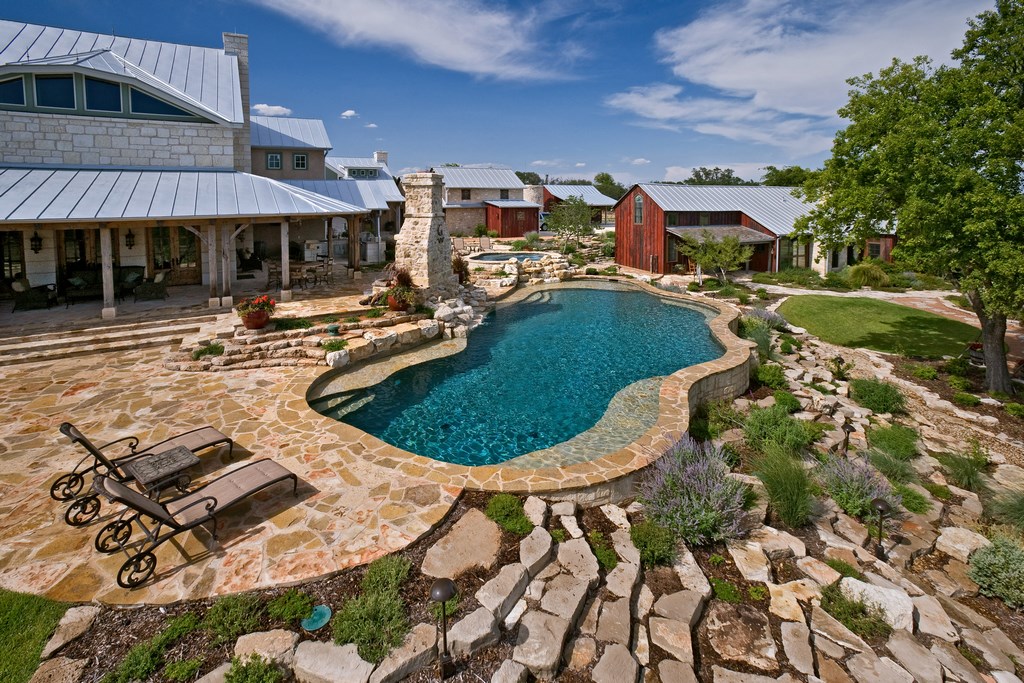Discovering Xeriscapes
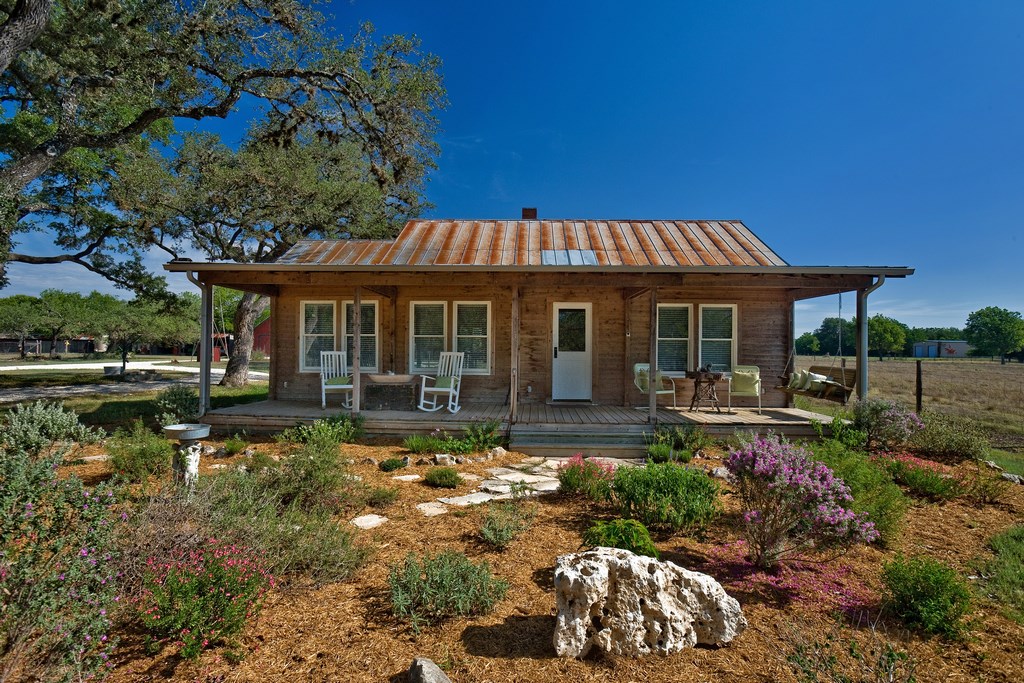
The word xeriscape is one of those terms that most everyone has heard but few truly understand. When we think of xeriscapes or xeriscaping, most people immediately visualize a dry almost lifeless desert landscape with rocks and cactus. Because the “x” is pronounced like a “z” the word is often mistaken for a fancy way of spelling zeroscapes, which implies that it has no plantings or uses zero water. Neither is true.
Working in the arid climates of the Texas hill country, I’ve embraced the xeriscaping concept as a way to create sustainable and inviting landscapes with minimal irrigation, but again, that does not mean completely dry landscapes. In fact, the concept can be adapted to almost any climate because it’s a set of landscaping principles as opposed to some sort of rigorous rulebook or paint-by-numbers template.
Denver Water, the city’s water utility company, coined the term in 1981 by combining the words “landscape” and the Greek prefix “xeros,” which means dry. Since then, the utility has continued to promote the idea of creating sustainable and water-wise landscapes via the xeriscape concept. They’ve proven that following the guidelines does save water and makes landscapes more drought-resistant and easier to maintain.
It’s a set of principles that fits neatly with my own ideas about the advantages of using plants that thrive in a given area. It’s all based on the concept that you work with nature instead of against it.
DRY IDEA
Long before I ever heard the term xeriscape, I had been taught in college that landscape architects should strive to become stewards of the land by working with the forces of nature and not against them. It’s like the Hippocratic oath in medicine: first “Do no harm.” Xeriscaping takes you in that direction. It forces you to think about what you’re doing and ask yourself, why choose plants that use an excessive amount of water, when there are countless other options that look just as good, and are easier to maintain?
Xeriscaping reduces maintenance and water use, but there’s nothing “zero” about it. You do use some water and there are countless plant species you can include. It’s not an idea of extremes. Yes, you are avoiding some types of plants that don’t naturally exist in the climate because they require more water or don’t have the right kind of soil. And, yes, part of xeriscaping does mean minimizing lawn, but not necessarily avoiding it altogether if you use it wisely.
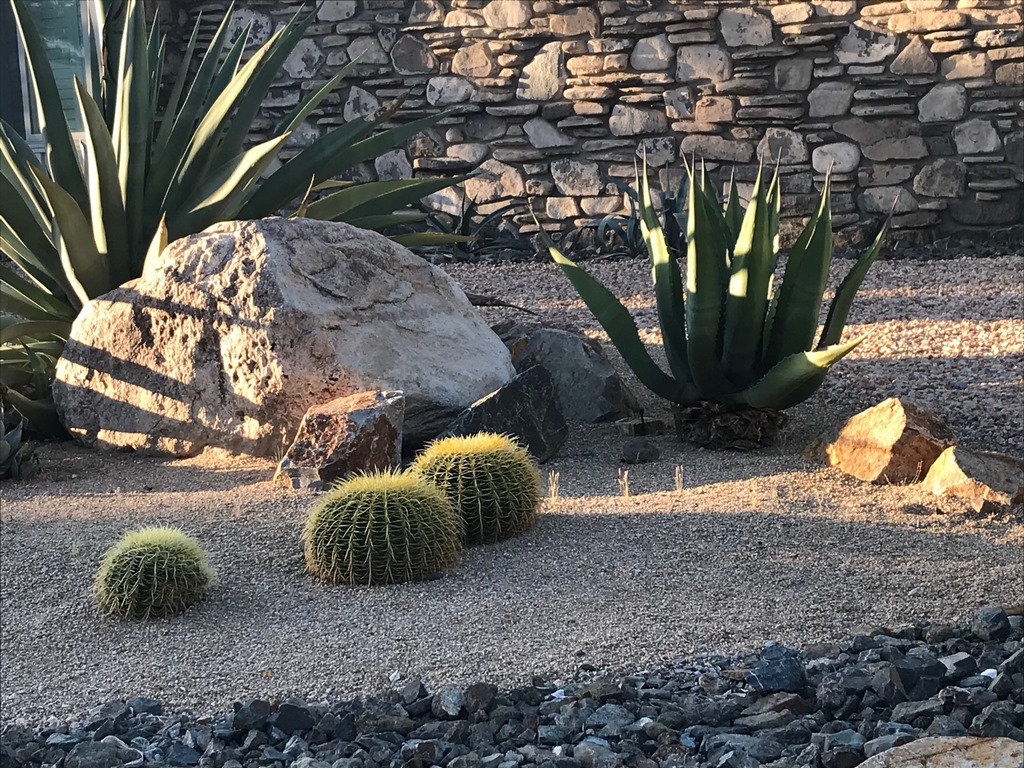 I’m not a purist when it comes to the way I apply xeriscaping guidelines. I do use some non-native plants, so long as they’re conducive to the climate zone and soil type, and I haven’t abandoned grass either, but I do use it judiciously in my designs.
I’m not a purist when it comes to the way I apply xeriscaping guidelines. I do use some non-native plants, so long as they’re conducive to the climate zone and soil type, and I haven’t abandoned grass either, but I do use it judiciously in my designs.
And, I do build swimming pools, which are not part of the xeriscaping concept, at all. But just because you have a pool, which does consume water primarily through evaporation, that does not mean you’ve given up on reducing water consumption elsewhere. Some people might find it ironic that I place water-wise landscapes around my clients’ pools. I think it’s never a bad idea to move in the direction of sustainable landscape because not only do they go easy on the H2O, they also are more likely to look great year ’round, and require less care. And that’s true whether you have a pool or not.
If done correctly, xeriscaping also saves money, and you can almost never overestimate how important that is to homeowners. Regardless of the project, or the clients’ income, there’s really no downside to applying xeriscape principles.
SEVEN EASY PIECES
As defined by Denver Water, there are seven principles of xeriscape:
qPlanning and Design: As a landscape designer and watershaper, I already have this aspect of xeriscaping down pat. Making precise plans and charging for them is part of every single project we do, no exceptions. But most homeowners and many professionals, who only work in softscape, do not always create plans, but instead work by sight and instinct.
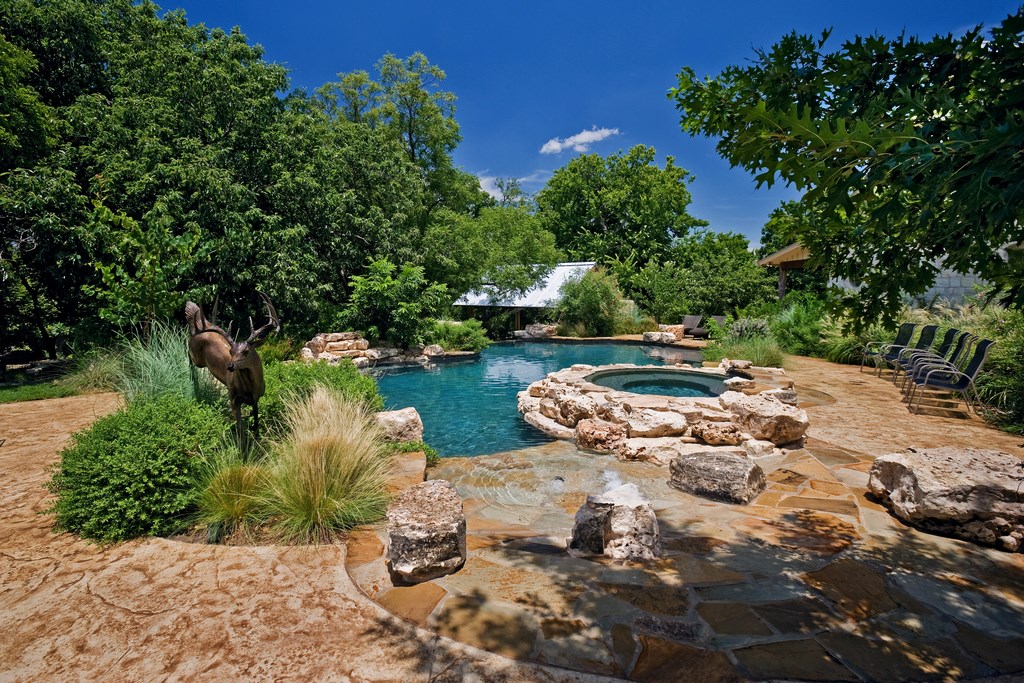 Xeriscaping requires a plan, one that shows the major elements in the landscape, the hardscape, the house, the pool, the driveway, and the planting areas. The first step in the design process is always programming, i.e., making a written plan to fit with the clients’ preferences, expectations and intended use which in turn determines what we’re going to try to achieve in the graphic design phase.
Xeriscaping requires a plan, one that shows the major elements in the landscape, the hardscape, the house, the pool, the driveway, and the planting areas. The first step in the design process is always programming, i.e., making a written plan to fit with the clients’ preferences, expectations and intended use which in turn determines what we’re going to try to achieve in the graphic design phase.
I always suggest my clients do a bit of their own research and highly recommend thinking locally and regionally for materials and finishes where possible, and one of things I want them to consider is which types and varieties of plants they like and those they don’t. This often neatly opens up the discussion about sustainability and xeriscaping.
If you follow the remaining six guidelines described below, xeriscape does encompass more stringent criteria compared to the way some people approach landscape design. For example, I’m not putting acid-loving plants like Azaleas, Gardenias or Rhododendrons in alkaline soil. But you do have more leeway with xeriscapes than many people think. I’ve had clients with a purist attitude say that you can’t have any irrigation, and that’s not true. As described below, you need smart irrigation.
q Soil Amendments: This is something people outside the landscape profession rarely think about, but it can be so important and helpful. Amending the soil means conditioning it by bringing in various materials, such as compost, that will help the plants grow, mostly by increasing the soils’ capacity to retain water.
The amount and type of soil amendment is based on existing site conditions and the needs of the plantings you’ll be using. When you amend the soil, your clients will enjoy heartier plants that usually grow faster and more abundantly than they would otherwise, and they will use less water.
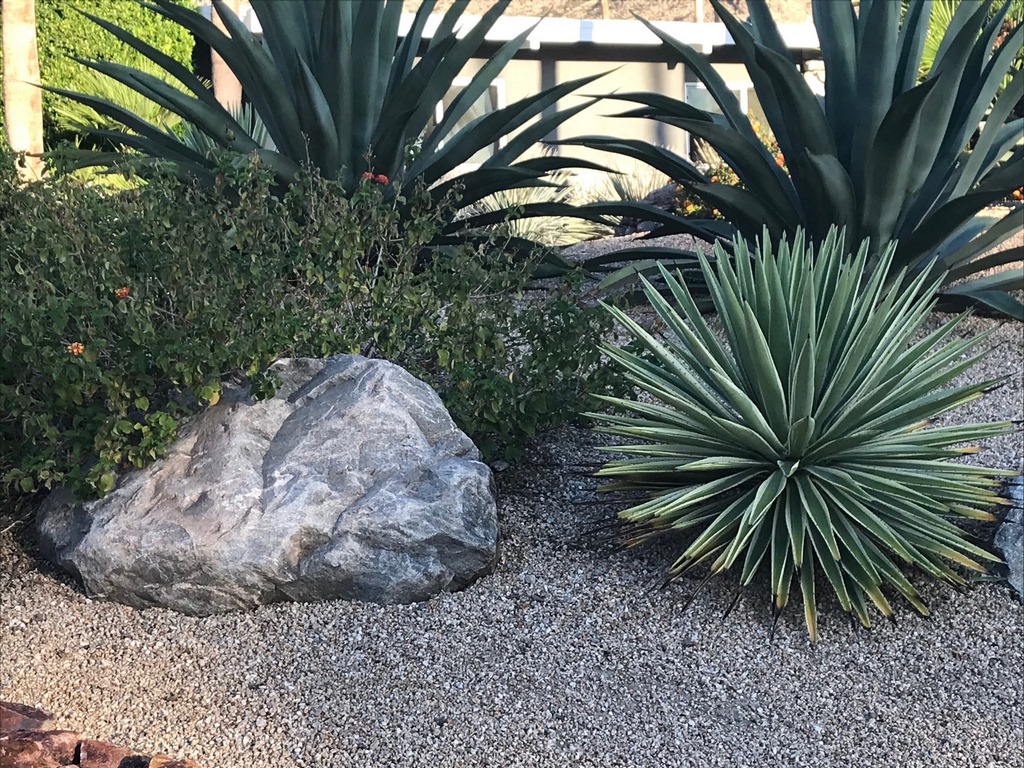 q Efficient Irrigation: Most of the time “efficient” means surface or subsurface drip irrigation instead of sprinklers, which atomizes the water in the dry air and wastes it by evaporation.
q Efficient Irrigation: Most of the time “efficient” means surface or subsurface drip irrigation instead of sprinklers, which atomizes the water in the dry air and wastes it by evaporation.
One of the reasons that grass is a challenge is that it requires sprinkling as drip irrigation doesn’t work well on grass because inevitably some areas receive enough water while others are too dry. That’s why I try to steer my clients toward grass varieties that use less. And it’s why you avoid combining plants with grass in the same irrigation zones because you either wind up overwatering the plants to keep the grass growing, or under-watering the grass. By separating plants into zones, you’re putting the water where it’s needed most in the right quantities.
When you do need to use spray irrigation, it’s important to choose the right kind of nozzle. I steer away from spray nozzles because the fine atomization increases evaporation and its easily blown away by even a light breeze. I like to use rotator nozzles that create more of a stream than a spray. The larger water droplets don’t evaporate as readily and they don’t drift off with the wind as easily.
Efficient irrigation doesn’t always mean automated. I tell my clients just because you have an irrigation systems doesn’t mean you should never hand-water some of your plants. There are many reasons some plants require more water than others and in just about every landscape there are going to be some that are thirstier than others. Hand-watering is a great way to get added water where it’s needed, and to participate in caring for your garden areas.
q Appropriate Plant Selection: This is one of the most important aspects of xeriscaping, and one of the most misunderstood. When you think of xeriscape, images of cacti in Arizona might come to mind. Well, in the Grand Canyon state, cacti are going to be among the plants you might use because they’re native to that area. Here in Texas, we also have wonderful grasses, yucca, cacti and succulents, but we might also be leaning more toward big tooth maple, Lacey oak or Texas Persimmon as the main actors in the landscape. Personally I’m in love with palette of wild grasses we have here, which also fit perfectly into a xeriscape design in this region.
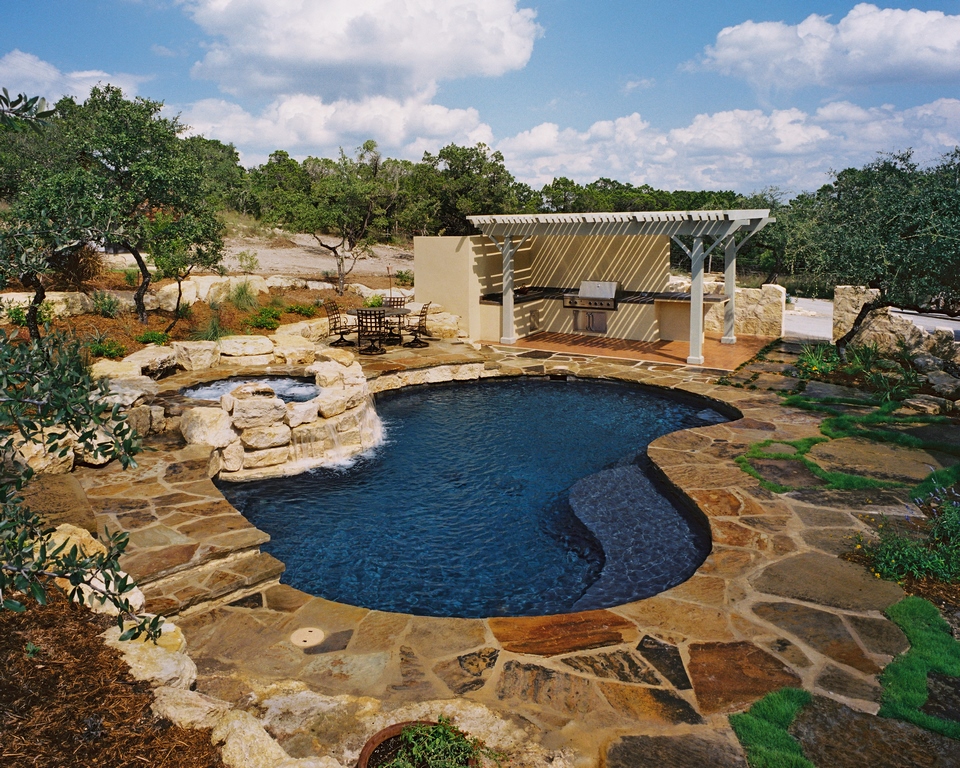 There are literally thousands of plants you can choose from in any given area. Most people don’t realize the variety of species and varieties available to them. That’s why I encourage them to consider a wide range of plants, and think about where they might work in the space and how the characteristics of the plants could come into play. A client might love the way a particular cactus blossom looks, but when they discover it’s there only for a very short time, they might change their mind in favor of something else.
There are literally thousands of plants you can choose from in any given area. Most people don’t realize the variety of species and varieties available to them. That’s why I encourage them to consider a wide range of plants, and think about where they might work in the space and how the characteristics of the plants could come into play. A client might love the way a particular cactus blossom looks, but when they discover it’s there only for a very short time, they might change their mind in favor of something else.
Naturally, the number-one factor is always the client’s preference, and sometimes they will insist on a type of plant that doesn’t really fit in the xeriscaping method, or they might want more grass than I would recommend. Even in situations where the client isn’t completely on board with the concept, I’m always trying to nudge them in a sustainable direction by presenting different planting options and showing them how gorgeous a well-conceived planting scheme can be.
q Mulch: Another important part of the xeriscape puzzle is mulch, which is used to retain moisture in the soil by reducing evaporation. It also suppresses weeds and keeps the soil cool, and it helps prevent crushing tender plant roots when you walk on around planted areas, something very few people ever think about.
|
Plant Types In the world of softscape, never underestimate the spectrum of plants available. Here’s a snapshot of plants we use in the Texas Hill Country that fit into the xeriscape model. Shade Trees: Live oak, Monterey oak, Burr oak, Texas red oak, Lacey oak, cedar elm, eastern red cedar, Mexican sycamore, bald cypress, cherry laurel, and big-tooth maple. Ornamental Trees: Texas mountain laurel, Eve’s necklace, Anacacho orchid, Texas persimmon, red bud, Mexican buckeye, golden lead ball, Yaupon holly, and crepe myrtle. Accents/Shrubs/Grasses: Prickly pear, twisted yucca, red yucca, yucca rostrata, Sotol Texas sage, evergreen/flame sumac, dwarf yaupon, rosemary, wax myrtle, viburnumMuhley grasses, Mexican feather, little blue stem, Grama, feather reed, and switch grasses. Perennials and Ground Covers: Butterfly iris, salvias, Turks cap, pavonia, zexmenia, aster, Mexican mint, daylily, holly leaf fern, coral honeysuckle, lantana, and Russian sage. –M.L. |
There are many types of mulch. Organic mulches also help improve the soil’s fertility as they decompose. Pine chips are a common mulch material and the most familiar in some areas. Here in Texas I like to use cedar because it’s so abundant in this area. Cedar is great because it decomposes very slowly, lasts a long time and weathers to nice grey color. Some people like to use composted mulch while others use pine straw, and others opt for decomposed granite, crushed or river stone, which you would only use with really arid plants because it gets hot.
q Limited Turf: As mentioned above, limiting turf does not mean eliminating turf. Yes, turf requires more water than other types of plants, usually because there’s so much of it. Consider how ornamental grasses used sparingly don’t use much at all, but a lawn is a water and maintenance hog. You need to mow it, usually fertilize it and sometimes aerate it. For these and other reasons, turf is not considered a sustainable type of planting.
Even with all that going against it, most of my clients do want some lawn area. They’ve spent their entire lives with turf, as we all have, and they want it for a variety of familiar reasons. It’s a great place for kids to play, maybe they coach sports and need a practice area, maybe they’re golfers and want to practice their chip shot, or they just like the way lawn looks and makes them feel. Many people I know love the smell of cut grass.
If you do include turf, it does make sense to limit it. Don’t install it in areas that won’t be used or seen. Find out specifically how the clients feel about it. Some simply assume all backyards have grass and haven’t really thought about it in a different way. For most of my projects, I try to limit the use of turf to one truckload, or about 8,000 square feet. That gives you a nice size lawn that can be used for play or most other purposes, but it puts a limit on water use and maintenance.
q Maintenance: All landscapes require maintenance, just as with swimming pools and other watershapes, the idea of “maintenance free” is a theoretical impossibility. Over time, any landscape left unattended will fall apart with weeds, dead plants and debris.
When I talk to clients about maintenance, I point out that by reducing maintenance, requiring less effort, it makes gardening less taxing and ultimately more enjoyable. I want my clients getting their hands dirty and breaking out the hose. When you take part in caring for the landscape you might just discover how much you enjoy it. Some people fall in love with their gardens and look forward the time they spend watering, weeding and trimming.
Ultimately, xeriscaping is a way to achieve a natural balance. It’s not one thing, but how the seven elements fit together and support the whole. I know some people have come to think of xeriscaping as a kind of landscaping fad. If you think of it only as the rock-and-cactus motif, then I suppose it is kind of a visual cliché. When you look at it as a holistic system, that’s when xeriscape becomes a sustainable and viable design concept.
As with so many aspects of what we do in the watershaping and landscaping professions, xeriscaping means educating the client. You have to open their minds to the basic concepts and their eyes to the potential beauty. When you explain the commonsense behind xeriscaping and offer it as an option, they will often embrace it as their own.
Xeriscaping prompts important questions that can guide your design. Do the choices we make suit the environment? Is the design based on commonsense? And, will this space be beautiful years later? For my part, I’ve found the principles of xeriscaping more liberating than constraining and far more pliable than most people would guess – even if you never touch a cactus.
Mike Logsdon is founder and president of Land Design in Boerne, Tex., a landscape/pool design/build firm serving the greater San Antonio area. He graduated from Texas Tech University in Lubbock, Texas, with a Bachelor of Landscape Architecture degree in 1983. Since graduating Logsdon has been involved in the landscape design/build industry, creating and implementing award winning swimming pool and landscape projects.











